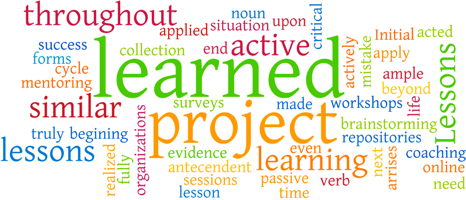Don't make mistakes more than once!
Worse, a fool with a tool is a dangerous fool.
Use tools in moderation and only in the appropriate setting. If one does not know why and how something needs to be done the use of a tool is just masking the problem. Actually it is exacerbating the situation.
Tools, such as document templates, computer software, mobile apps to name a few, can cause harm in a variety of ways.
First of all using the wrong tool for a given circumstance can lead to both a waste of time and the wrong results. Using the right tool but without proper knowledge of how to use the tool or the actual purpose of the tool may also lead to a lot of wasted time and the wrong results.
For example there is now ample evidence of how errors in spreadsheets such as in MS-Excel have caused major problems. There is even a special interested group, The European Spreadsheet Risks Interest Group - EuSpRIG -
We have seen quite a few instances where the wrong or inappropriate tool was used and even more situations where the right tool was used in an incompetent way. Massive schedules in MS-Project where a simple task list in a document or simple spreadsheet would have sufficed. Project document templates being filled in without making any adjustments to the contents and layout and by doing so adding complexity that was not needed for that specific project. MS-Project schedules with mistakes such as wrong project start date, mishmash of resources, needless task constraints to name a few.
Therefore two most important questions to ask your self when reaching for a certain tool are:
Lessons Are Not Learned At the End of a Project

Demand Semantic Discipline in describing Risks
The word semantic comes from the Greek word sēmantikós which means "having meaning".
The word discipline comes from the Latin word disciplina meaning "instruction".




